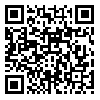Tue, Dec 23, 2025
[Archive]
Volume 13, Issue 37 (2020)
JMED 2020, 13(37): 15-30 |
Back to browse issues page
Download citation:
BibTeX | RIS | EndNote | Medlars | ProCite | Reference Manager | RefWorks
Send citation to:



BibTeX | RIS | EndNote | Medlars | ProCite | Reference Manager | RefWorks
Send citation to:
Shami R, Gholamzadeh D, Vedadi A. Explaining the Performance-based Payment Model with an Educational Approach in Iranian Educational and Medical Centers and its Comparison with the Existing Models in the Health Care System of the Countries Implementing this scheme. JMED 2020; 13 (37) :15-30
URL: http://edujournal.zums.ac.ir/article-1-1219-en.html
URL: http://edujournal.zums.ac.ir/article-1-1219-en.html
1- Department of Public Administration, Central Tehran Branch, Islamic Azad University, Tehran, Iran
2- Department of Public Administration, Central Tehran Branch, Islamic Azad University, Tehran, Iran ,dar.gholamzade@iauctb.ac.ir
2- Department of Public Administration, Central Tehran Branch, Islamic Azad University, Tehran, Iran ,
Abstract: (7405 Views)
Abstract
Background and Purpose: This study aims to explain and analytically compare the performance-based payment models with an educational approach in the educational and medical centers of Iran.
Analysis Methods: This is and applied- developmental research in terms of purpose and the two methods of structure-thematic and the documentary analysis methods have been used. We have used purposive and sequential sampling methods and the theoretical saturation of sampling was achieved in 10 people. The semi-structured interviews were used to collect information about the components of the current payment system. The external inspection and external validity were used to reach the reliability, as well. To analyze qualitative data, the existing model was coded and compiled using Nvivo 12 software.
Findings: The findings indicate that among the 22 most influential components in the performance-based payment calculation formula in the Iranian educational and medical centers, only 7 main variables and 5 subcomponents were practically involved and other influential variables such as the category of education is not included in this financial system.
Conclusion: In the performance-based payment model in Iran, despite physicians and staff in the educational and medical centers allocate most of their working time to the student education, there is not a large difference in the payment method based on the performance of these centers with the centers that are purely medical.
Background and Purpose: This study aims to explain and analytically compare the performance-based payment models with an educational approach in the educational and medical centers of Iran.
Analysis Methods: This is and applied- developmental research in terms of purpose and the two methods of structure-thematic and the documentary analysis methods have been used. We have used purposive and sequential sampling methods and the theoretical saturation of sampling was achieved in 10 people. The semi-structured interviews were used to collect information about the components of the current payment system. The external inspection and external validity were used to reach the reliability, as well. To analyze qualitative data, the existing model was coded and compiled using Nvivo 12 software.
Findings: The findings indicate that among the 22 most influential components in the performance-based payment calculation formula in the Iranian educational and medical centers, only 7 main variables and 5 subcomponents were practically involved and other influential variables such as the category of education is not included in this financial system.
Conclusion: In the performance-based payment model in Iran, despite physicians and staff in the educational and medical centers allocate most of their working time to the student education, there is not a large difference in the payment method based on the performance of these centers with the centers that are purely medical.
Article Type : Orginal Research |
Subject:
Education
Received: 2019/09/8 | Accepted: 2020/08/6 | Published: 2020/09/17
Received: 2019/09/8 | Accepted: 2020/08/6 | Published: 2020/09/17
Send email to the article author
| Rights and permissions | |
 |
This work is licensed under a Creative Commons Attribution-NonCommercial 4.0 International License. |





